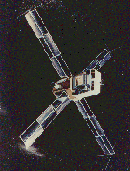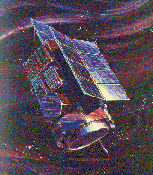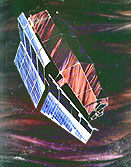The History of X-ray Astronomy:
The Rough and Tumble Early Days

Forty years ago, on the hot, desert sands of southern New Mexico, a small team of scientists working in relative isolation launched a small X-ray detector on an Aerobee rocket that cracked the Earth's atmosphere for a mere 350 seconds. The date was June 18, 1962, the birth of X-ray astronomy.
The detector was crude by today's standards. The team found but one source, which they named Scorpius X-1, along with a pervasive blanket of X-ray radiation that would be known as the X-ray background. Yet this was no meager accomplishment. Galileo would have been proud.
In 1610, Galileo had the insight to turn a telescope toward the sky to discover what many of his contemporaries deemed implausible, that is, objects in space too dim to be seen with the naked eye. Likewise, in 1962, the notion that there were objects in space emitting X rays of enough intensity to warrant study also seemed implausible.
Yet here we are, forty years later, with over 100,000 X-ray sources detected. Among them are the most exotic phenomena in the universe: black holes, neutron stars and quasars.
Interestingly, the first X-ray imaging telescope, which would fly in 1963, was about the same length and diameter as Galileo's first optical telescope from 1610. Optical telescope sensitivity has since improved by a factor of 100 million in roughly 400 years. Ditto for X-ray telescope sensitivity, as demonstrated by the field's latest beauty, the Chandra X-ray Observatory, only scientists accomplished this leap in 40 years.
It takes a lot of energy to make X rays. That's what makes X-ray astronomy so exciting: The scene is filled with the most explosive and energetic phenomena going. It just took a little while for humans to tune in to the X-ray universe.
The 200,000-Year Head Start ...
Optical astronomy got a 200,000-year head start on X-ray astronomy because one needs only to look to the stars to enjoy their splendor. Our eyes detect visible light, and stars shine brightly enough to cast a shadow on a dark night on the Earth's surface. The Earth's protective atmosphere blocks out celestial X-ray radiation. X rays don't make it down to ground level like optical light can. The only way to see the X-ray universe is to build X-ray detectors and then lob those detectors into space, a feat that couldn't be accomplished until about 50 years ago.
X rays are produced basically in two ways: when things get very hot, or when things get very chaotic and particles bump into each other. Black holes are a source of thermal X-ray emission, pure heat. Gas swirling into a black hole, drawn by the black hole's extreme gravity, heats to temperatures over a million degrees, hotter than the Sun's surface and hot enough to glow predominantly in X rays -- particularly when closest to the black hole. In fact, this is how scientists "see" a black hole, an object so dense that light cannot escape once inside the void. Scientists see the X-ray commotion around the black hole, not the black hole itself.
Black holes and neutron stars are also the scene of non-thermal X rays, either when electrons get whipped about in powerful magnetic fields, or when particles of light, called photons, smack against electrons and gain energy.
The Sun cranks out X rays during solar flares, great eruptions from the solar surface and corona. The predominant form of radiation from the Sun, however, is optical light and ultraviolet radiation (UV). UV is more energetic than optical light; it causes sunburn and skin cancer. Yet UV is still less energetic than X rays.
As early as 1948, radiation detectors aboard rockets desperately attempting to pierce into space detected X-rays from the Sun. The consensus though the 1950s, however, was that the Sun's X rays weren't very strong. Thus, there was little hope in detecting X rays from distant stars.
Gamma rays, which are more energetic than X rays, could be produced by collisions of cosmic rays or by matter-antimatter collisions, scientists speculated. Only a few scientists at the time, though, thought that there existed exotic objects in space producing copious amounts of X-rays. The rocket launch of 1962 changed all that.
The Little Detector That Started It All ...
Riccardo Giacconi, then at American Science and Engineering (AS&E) in Cambridge, Mass., led the 1962 experiment with fellow scientists from AS&E and the nearby Massachusetts Institute of Technology. This team -- which included Herbert Gursky, Frank Paolini and Bruno Rossi, who along with Giacconi are considered the fathers of the X-ray astronomy field -- titillated the astronomy community with the announcement that the Milky Way galaxy was home to at least one bright X-ray source and likely many more.
These exotic sources, the team suggested, could be as exciting as the moons Galileo discovered around Jupiter. They published a paper quickly after the June launch, entitled "Evidence for X Rays from Sources Outside the Solar System," in Physical Review Letters on December 1, (volume 9, pp. 439-443).
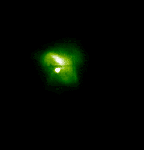
This was the paper that launched a thousand ships... well, balloons and sounding rockets at first, and then satellites. From 1963 to 1970, X-ray detectors and telescope aboard high-altitude balloons (getting above most of the atmosphere for many hours) and sounding rockets (in space for a few minutes) made a string of startling discoveries: the Crab Nebula pulsar; supernova remnants; so-called "X-ray stars," later revealed as neutron stars and black holes, and galaxy M87, a massive elliptical galaxy containing thousands of globular clusters. M87 was the first extragalactic X-ray source discovered.
All told, by the close of the 1960s, scientists knew of 40 extra-solar X-ray sources, and we had our first X-ray image of the Sun, to boot. X-ray instruments were also piggy-backing on early satellite missions, a stepping stone towards the first dedicated NASA X-ray satellite mission, named Uhuru.
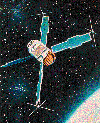
Uhuru, from the Swahili word for "freedom," was launched in 1970 from the San Marco platform in Kenya on the seventh anniversary of Kenyan independence. Over the next two years, Uhuru would expand the number of known sources to more than 400; show that "X-ray stars" are neutron stars or black holes accreting matter from companions in binary star systems; and discover X rays from hot gas floating freely in galaxy clusters.
Europe took up the initiative through the 1970s with a series of small X-ray satellites, such as the Astronomy Netherlands Satellite and the Ariel V from Great Britain. Scientists were discovering ever more X-ray binaries and a phenomenon called X-ray bursting, short explosions of intensely luminous X rays. Ariel V established a new class of X-ray objects, called Seyfert galaxies, whose X rays are likely powered by a supermassive black hole in the galaxy core.
An Era of Discovery
Through the 1970s, scientists found that X-ray pulsars had a wide range of periods, from seconds to minutes. Indeed, it was becoming clear that the X-ray universe is forever changing, with X-ray binaries flashing on and off across the sky like fireflies. Some sources lie dormant for months to years and then suddenly flash on again.
The 1970s was also the era of black hole discovery. Cygnus X-1 is the longest known of the black hole candidates. First identified as an X-ray source in 1965, follow-up observations in 1973 by the US-UK Copernicus satellite provided strong evidence that this was a stellar-size black hole in a binary system. More convincing evidence for the existence of black holes came two years later from Ariel V, with the discovery of A0620-00, or Nova Mon 1975. Essentially, that data have shown that these sources are too massive and compact to be an "ordinary" neutron star. Cygnus X-1 is about seven solar masses; the cutoff for a neutron star is about 3 solar masses, according to Einstein's general relativity.
Other key satellites from this era included NASA's Small Astronomy Satellite-3 (SAS-3), launched in 1975, and NASA's High Energy Astronomy Observatory-1 (HEAO-1), launched in 1977. HEAO-1 created a comprehensive catalog of X-ray sources. Its relatively precise ability to locate position sources, compared to early satellites, enabled the discovery of hundreds of optical companions and source classifications. HEAO-1 also discovered the Cygnus superbubble and gathered detailed information on spectra of active galactic nuclei and the X-ray background.
NASA's Einstein X-ray Observatory, originally called HEAO-2 and launched in 1978, was the last major U.S. X-ray mission for nearly two decades. This would be the prototype for the major European and Japanese missions that would dominate the 1980s and 1990s. Einstein, the satellite, carried the first large X-ray telescope with mirrors. Einstein made the first X-ray images of shock waves in supernova remnants and of hot gas in galaxies and galaxy clusters. Einstein also accurately located over 7,000 X-ray sources, including stellar coronas, X-ray binaries, galaxies, and quasars. It made possible a new way to study the mysterious dark matter permeates the universe, and it showed that most of the X-ray background (first discovered in 1962) is probably due to discrete sources.
By 1980, X-ray astronomy was a major branch of astronomy. The best was yet to come: EXOSAT, Ginga, ROSAT, ASCA, and Beppo-SAX -- satellites from Europe and Japan -- would define a new era for X-ray astronomy, providing crucial tests of general relativity and jostling astronomers with the reality that we still know so little about the contents, structure, physics and evolution of the universe.
40th Anniversary Articles
- Introduction
- The Rough and Tumble Early Days
- Moving Toward the Modern Era
- The X-ray Universe Today
- Forty Years from Today



